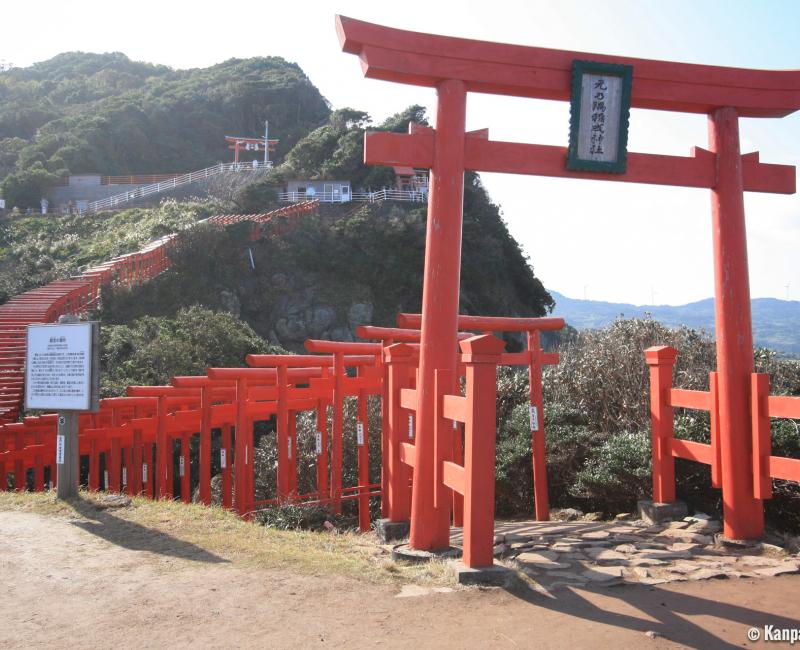Motonosumi Inari
The Torii Tunnel Between Sea and Mountain
Motonosumi Inari is a Shinto shrine facing the Sea of Japan located in Nagato City, in Yamaguchi prefecture, in south-western Honshu. It is renowned for the hundred vermilion torii gates path winding on the cliffs and complimenting the wonderful natural panorama. However, secluded from the urban areas, it is difficult to access by public transportation.
Motonosumi Inari Jinja’s construction was spurred in 1955 by a local fisherman’ dream of a white fox. The fantastic animal requested to have a shrine built for him and he would grant the man success in all his doings. The legend has it that this fox deity was in fact a spirit of Taikodani Inari shrine in Shimane prefecture. Nowadays, several other deities are worshiped, presiding over a successful career, good luck, or road safety.
Photographers appreciate the beauty of this spot, combining the vermilion red of the 123 torii ⛩️ gates covering the path, the deep blue of the sea and the bright green of the alpine vegetation, in an unobstructed panorama on a steep coastline. This landscape was elected among the 31 most beautiful views of Japan by CNN in 2015. The site is a worthy rival of Kyoto’s Fushimi Inari Taisha thanks to its scenic beauty and its quietness.

Another characteristic of this shrine is the location of the Saisenbako offering box. In Japan, there is a custom of throwing a coin, usually of five yens 💴, in a box placed on ground level at the entrance of Shinto buildings. However, Motonosumi Inari’s Saisenbako was placed 6 meters above ground at the top of the last torii of the long path going up the mountain. The Japanese like to think their wish is more likely to be granted if they succeed in throwing their coin in such a box that is smaller and in a higher location than usual.
Yet, Motonosumi’s location is a significant downside to the visit. There is indeed no direct connection by train 🚅 or by bus, and car 🚙 is the only convenient transportation mean. We therefore highly recommend renting a car for the day in Shimonoseki or Yamaguchi to enjoy the ride while admiring the neighboring coastal landscapes, for example Omi Island’s rock formations or Tsunoshima Bridge, Japan’s second-longest bridge in Nagato.
In October 2018, the shrine shorted its official name by dropping the "Inari" part, as it was thought to be too difficult to memorize for foreign tourists. Motonosumi’s head priest said this change was a "revelation from the gods".
In mid-December 2021, the shrine staged its first light-up event to revitalize tourism in the area in the perspective of a Coronavirus 🦠-free future.

